Composer Conlon Nancarrow
A Conversation With Bruce
Duffie
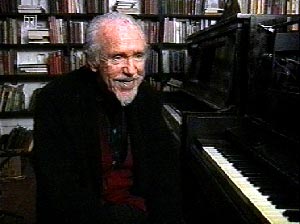
Composer Conlon Nancarrow
A Conversation With Bruce
Duffie

All composers work in isolation to some degree. It's a lonely business sitting at a desk or a keyboard of one kind or another, making notations in musical language of sounds heard in the mind, and thus communicating those thoughts in a coordinated fashion so that others can reproduce or recreate them in another time at another place completely removed from the original spark of imagination.
For the most part, those musical ideas get presented at least once to a public large or small by an ensemble, or perhaps even just the composer him- or herself at the piano. Many legendary figures performed their own works, and others turned them over to conductors or small groups. Only a few have resorted to machinery in order to have their ideas become sound.
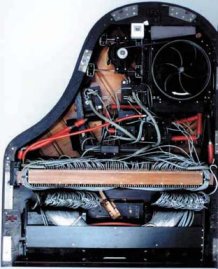 Conlon Nancarrow's mind seemed to conjure up things which were complicated,
indeed too complicated for mere humans to reproduce. So he deliberately
chose to find a way to get those ideas across by the use of a machine -
the Player Piano. By controlling the holes which are punched into the
paper, he could fabricate his thoughts so that they would get heard exactly
as he intended, no matter how dense or complicated or rapid they might be.
The mechanical apparatus was able to do what human fingers were unable to
do, and only the device could accomplish it.
Conlon Nancarrow's mind seemed to conjure up things which were complicated,
indeed too complicated for mere humans to reproduce. So he deliberately
chose to find a way to get those ideas across by the use of a machine -
the Player Piano. By controlling the holes which are punched into the
paper, he could fabricate his thoughts so that they would get heard exactly
as he intended, no matter how dense or complicated or rapid they might be.
The mechanical apparatus was able to do what human fingers were unable to
do, and only the device could accomplish it.
A somewhat lengthy biography (with opinion) appears at the end of this interview. The recipient of a MacArthur Fellowship, Nancarrow's complete Studies for Player Piano have been released on compact disc by Wergo (Germany), produced by Charles Amirkhanian.
In 1987, I noted that his 75th birthday was approaching, so I wrote
to him, and he was gracious enough to accept my request of a telephone interview.
Here is that conversation . . . . .
Bruce Duffie: You’ve spent much of your time in the last thirty or forty years working just with player piano.
Conlon Nancarrow: Yes, most of it.
BD: Is your work with player piano in any way similar to composers who work with computers or synthesizers?
CN: Well, not really. In fact, I started this before they were available. In fact I started player piano really for reasons of difficulty of performance, and that was the only way I knew of to achieve it. At that time, computers and electronic things didn’t exist. If that equipment had existed then, I might have gone into that instead of player piano.
BD: That was the reason for my question. I just wondered if the player piano was an antecedent to the synthesizer in keeping all the control in the composer’s hands.
CN: Well, yes, it’s related, although the last couple of years I’ve started writing again for live performance. Also in the last few years, things that I wrote many years ago that were never played because, mainly, they were too difficult, have been played and played very well.
BD: When you’re writing a piece of music, do you write it to be difficult, or is this the only way you feel that it can be written?
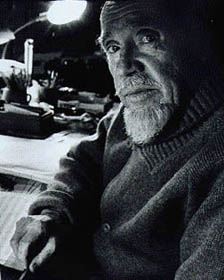 CN: Oh, no, no, I have no obsession with difficulty.
It’s just that most of my ideas are fairly complex in the rhythmical sense,
mainly tempo and rhythm. In fact, the more complex ones are literally
impossible for people to play. Some of the others, not so much.
CN: Oh, no, no, I have no obsession with difficulty.
It’s just that most of my ideas are fairly complex in the rhythmical sense,
mainly tempo and rhythm. In fact, the more complex ones are literally
impossible for people to play. Some of the others, not so much.
BD: What has prompted you to get back to writing for human beings again?
CN: Because in the last few years the musicians I've come across—well, musicians, performers today—are enormously advanced over what they were thirty or forty years ago.
BD: Are they advanced just technically or also musically?
CN: Oh, both. And they have much more understanding of the contemporary things in music and so forth.
BD: When you’re writing a piece of music, perhaps for player piano, for whom do you write? Whom do you have in mind? Is there a specific audience?
CN: No, not exactly. I write a piece for whoever wants to listen to it.
BD: Then let me ask a big philosophical question. What do you believe is the purpose of music in society?
CN: [Laughter] It is probably like anything else. What’s the purpose of literature? What’s the purpose of painting? What’s the purpose of anything?
BD: Do you feel you are contributing to this purpose?
CN: Well, I hope to.
* * * * *
BD: With the mechanical devices that you use, is there any room at all for interpretation?
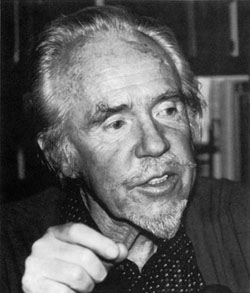 CN: That’s a very vague term, interpretation. In
the first place, the pianos I use are what’s called reproducing pianos that
have a wide range of dynamics. In the perforated roll you can do all
kinds of things with pedal and soft pedal and sustaining pedal and accelerations
and so forth. It does have its limitations, of course, but also things
that a pianist can’t do.
CN: That’s a very vague term, interpretation. In
the first place, the pianos I use are what’s called reproducing pianos that
have a wide range of dynamics. In the perforated roll you can do all
kinds of things with pedal and soft pedal and sustaining pedal and accelerations
and so forth. It does have its limitations, of course, but also things
that a pianist can’t do.
BD: So you are content, then, to live with those limitations rather than the limitations of any performer who would come across a piece of sheet music?
CN: To a certain extent. Last year I had a concert in New York of all live music. I wrote an orchestra piece for it and they played some of my older things that had never been played. In fact, it worked out very well.
BD: What do you expect of the audience that comes to hear your pieces?
CN: I just hope they like it. I don’t know, what else could I expect? I hope not to get hissed. Never have been yet.
BD: [Laughter] Well, that’s good. Do you feel that the audience can grasp all of the intricacies of your music?
CN: I don’t know. Maybe it’s a fairly limited audience, but I will say that probably an audience of today is much more likely to than an audience of thirty or forty years ago.
BD: Is that because the audiences in general have expanded their musical horizons?
CN: Yes, I think so. Also they have more knowledge of, or acquaintance with, modern trends in music. They also have an acquaintance with various ethnic musics, especially African and Indian music, which have many rhythmical things which I work with. More and more people are becoming aware of that, too.
BD: These are all good trends?
CN: Yes, I think so.
BD: So where is music going today?
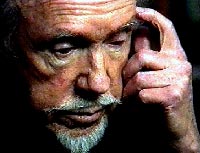 CN: I have no idea. I don’t think anyone else does.
CN: I have no idea. I don’t think anyone else does.
BD: Well, what direction is it heading?
CN: I don’t know. As a matter of fact, I think that probably in the arts in general, maybe even a little more so in music, there’s a different sort of a crisis. Well, there’s a crisis in society too, but that’s something else.
BD: Are you optimistic about the future of music?
CN: Yes, of course. I don’t think it’s going to die out.
BD: [Laughter] You never know. Occasionally composers I chat with are very pessimistic.
CN: Well, yes, I guess so. Of course music is not going to stop. The very, very worst that can happen is that contemporary movements may reach a dead end. In fact, some of them already have in some senses. All that’s left is music of the past and people will play it. They’ll always have music—if there’s a society left. That’s a bigger problem.
BD: And one I’m not going to get into.
CN: Well, no, I’m not either.
* * * * *
BD: When you’re writing for the player piano, do you notate the ideas on regular music paper, or is it something that you just hear in your head and can only put into the piano roll?
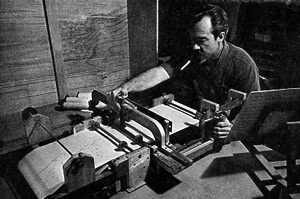 CN: It’s a little complicated. When I first started
with player piano, I just simply wrote a piece on regular music paper and
then punched it out. But the music got more and more complicated.
Now I use a technique where I take a blank roll of paper and draw out a series
of temporal relationships that I know I’m going to use in the piece.
I also have more or less an idea of what the piece is going to be like,
but they’re just marks of temporal relations, nothing else. Then I
transpose that back to standard music paper. I mark out all of those
divisions, and write the piece of music. Then I go back and punch it
onto the roll that’s already marked out in divisions. It’s a little
complex.
CN: It’s a little complicated. When I first started
with player piano, I just simply wrote a piece on regular music paper and
then punched it out. But the music got more and more complicated.
Now I use a technique where I take a blank roll of paper and draw out a series
of temporal relationships that I know I’m going to use in the piece.
I also have more or less an idea of what the piece is going to be like,
but they’re just marks of temporal relations, nothing else. Then I
transpose that back to standard music paper. I mark out all of those
divisions, and write the piece of music. Then I go back and punch it
onto the roll that’s already marked out in divisions. It’s a little
complex.
BD: What would happen if a player, or a number of players, could adequately reproduce what you have put on the roll in a live concert?
CN: By now several people have arranged and played some of my earlier player piano pieces. Some of the later ones would be just impossible, but the early ones can be performed.
BD: Will these later ones always be impossible?
CN: I’m afraid some of them will be, or very near it, or so near impossible it’s not worthwhile trying.
BD: Then on the ones that have been played by human beings, do you want any kind of interpretation at all, or must they be exactly the same as they are on the roll?
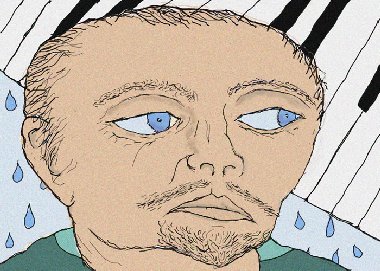 CN: Not exactly, but I’d like it as near that as possible.
Because I work with the limitations, I make the music within that limitation,
and if it’s reproduced some other way, I’d like it similar to what I did,
in sound.
CN: Not exactly, but I’d like it as near that as possible.
Because I work with the limitations, I make the music within that limitation,
and if it’s reproduced some other way, I’d like it similar to what I did,
in sound.
BD: Are you still working with piano rolls?
CN: Oh, yes, but now I’m branching out. In fact, I just finished a string quartet that’s going to be played next year in Germany, and now I’m working on a concerto for pianola and orchestra. That’s a very primitive form of player piano, but I happen to know a virtuoso of the pianola. He performs on it. I have to make the roll, but he controls all of the things with the roll. In other words, he can go along with a conductor, which my standard rolls cannot because they’re rigid the way I’ve made them.
BD: So there is a little more interpretive power in that.
CN: Yes, yes. That’s what I don’t understand with many musicians and music lovers. They always want something different, and they never say that they would like to have War and Peace different each time or Rembrandt’s this or van Gogh’s that or the Shakespeare sonnets different each time. It’s there! But they insist that each time a piece of music is played, it should be different. I don’t understand why.
BD: That’s interesting. You’re the first composer that I’ve ever heard express that feeling.
CN: As a matter of fact, most composers have that same "block." I remember years ago, Roger Sessions said that if he had the perfect recording of his favorite piece of music and the sound was as good as live, and it was his favorite performance of it, after he’s heard it once, he’d throw it away. I think that’s kind of crazy. If I had something like that, my favorite piece of music played the way I like best, that’s what I would keep to listen to.
BD: Is there any corollary with the record-buying public which will buy a record and play it over and over and over again?
CN: I think even the record-playing public has a tendency to have one of their favorite pieces of music and like the way it’s played, and after a while I think they’d like to hear it played by someone else. I don’t know. I have that impression.
BD: This is the thing. We can’t get your player piano pieces played by anyone else. They are there always exactly the same.
CN: Well, that’s true, yes.
* * * * *
BD: In music, either in general or your own music, where is the balance between the artistic achievement and the entertainment value?
CN: Well, it depends on how you define both of those. Entertainment can be just simply having a good time at a party or something like that. But you could say that enjoying music is entertainment. I don’t know. I don’t know really what your definition is.
BD: I’m looking for the definition of the creator. That’s why I asked.
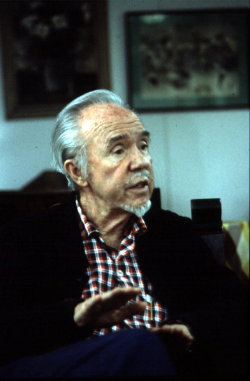 CN: Yes, well, I don’t know.
CN: Yes, well, I don’t know.
BD: Do you find composing fun?
CN: It’s my main occupation. I wouldn’t do it otherwise, I guess. Well, I don’t know if I'd use the word “fun,” but it’s very important.
BD: Should music be important for everyone’s life?
CN: Well, no, of course not. For some people it means nothing.
BD: How do we get more people interested in new music, either yours, or other new music?
CN: The only thing I think, which is happening gradually, is that music groups are playing more and more contemporary things, and I guess more and more people are hearing different things.
BD: Is this a good idea, that we have so much available to us?
CN: Oh, I think so. It’s better to have too much than too little, no?
BD: What advice do you have for young composers coming along?
CN: Nothing special. There are several movements, now, in contemporary music which, in a way, seem to me they’re regressing, going back. I mean the neo-Romantics, the minimalists, the various other groups. It’s sort of a retreat in a way.
BD: Is there ever a chance that we would have too many composers in the world? Here in America there seem to be just so many young composers.
CN: That’s true. It becomes a problem mainly for the composers, themselves, surviving and getting their works performed. If there are too many, there’s just not enough opportunity. The development of electronic music and computer music means a composer in his own home can produce these things, similar to what I do on player piano. Whether he has an audience or not, that’s something else.
BD: When you’re writing for player piano, do you ever miss the interaction with the interpreters or the performers?
CN: Well, yes, except then I’m a little nervous about what they’re going to do. I’m not nervous about my player piano because I know what it’s going to do.
BD: There’s only a mechanical failure, and that’s out of your hands.
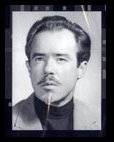 CN: Well, yes. I remember many years ago I had
an argument with Copland about this whole thing of performers. He was
saying that he liked it. I think it was partly a fact that he liked
the whole atmosphere of going to a symphony concert, but he used the analogy
of the first horn missing his high note. Not that he wanted it to happen,
but possibility made the tension. My argument was I want to be sure
he hits the note. It’s just a point of view.
CN: Well, yes. I remember many years ago I had
an argument with Copland about this whole thing of performers. He was
saying that he liked it. I think it was partly a fact that he liked
the whole atmosphere of going to a symphony concert, but he used the analogy
of the first horn missing his high note. Not that he wanted it to happen,
but possibility made the tension. My argument was I want to be sure
he hits the note. It’s just a point of view.
BD: I’m glad that someone has brought up this other idea.
CN: Yes, but it’s not a very common idea, I’m afraid. [Laughter]
BD: Have you enjoyed the performances that you’ve heard of the pieces you've written for live musicians?
CN: Some of them, not all. As a matter of fact, most of them, yes. There were a few that weren’t very good.
BD: What about the recording of the String Quartet played by the Kronos.
CN: Oh, that's very good, yes. They’re the first. I wrote that over forty years ago. They played it for the first time a few years ago. It had never been played before. Of course, since then it’s been played in quite a few places by different people and played very well. It’s not all that difficult, today at least. At that time, it seemed like people thought it was too difficult to play.
* * * * *
BD: As you approach your seventy-fifth birthday, what is the most surprising thing you have noticed in that time in the art of music?
CN: I can’t think of anything surprising. It’s been a gradual process of things happening. I don’t know of any one special thing that’s surprising, no.
BD: Is there anything that is happening now that you didn’t think would happen years ago but has come to pass?
CN: Maybe, maybe. Years ago I didn’t think there was going to be this regression I was telling you about that’s happening to a certain extent in music. No, that I didn’t look forward to, but it’s happened.
BD: Is there anything you thought would happen that hasn’t?
CN: No. From way back, even before it came out, I was hoping and thinking that electronic music would develop, and it has. Who knows where it will go? I don’t know.
BD: When you first started tinkering around with the player piano, did you assume that you would get performances of these pieces?
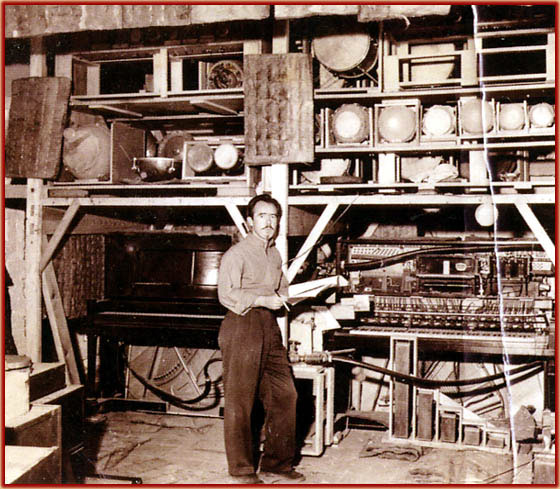
CN: Performances? You mean recordings?
BD: Either recordings that are made for the public or performances where the public can come and listen to the player piano.
CN: These player pianos are not very portable. Even from the beginning a few friends came to my studio to listen, but it was hardly a big audience. It was only later that recordings were made and the public was built up. It was this year that I attended the festival in Amsterdam where someone in Germany had repaired an old Bösendorfer piano with the system that I have for performance. I took some rolls there and they played them at the concert. It was what they called live. No one was playing it; it was the player piano, but it was live there.
BD: But at least it was in an auditorium where others could hear it, rather than just your studio in Mexico City.
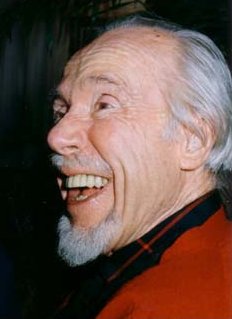 CN: Yes, although long before that, people had made very
good tapes of my music in the studio and played those at concerts with good
equipment, and the sound is very good.
CN: Yes, although long before that, people had made very
good tapes of my music in the studio and played those at concerts with good
equipment, and the sound is very good.
BD: So you don’t find it one step removed to hear a tape of your piano rather than a different piano playing the same roll?
CN: No, no. As a matter of fact, in general I prefer the tape because it’s exactly the way I wanted it from my studio. It’s a good recording.
BD: There was something mentioned in one of the articles about a record being issued in 1960. What is that old record?
CN: That was a Columbia record and was the first one that came out. Incidentally, it’s a very bad recording.
BD: The others that I’m aware of are the ones on 1750 Arch Records, and there are three studies on a New World Record.
CN: Yes. That’s also a terrible recording. That New World record has my pieces, a few of mine and a few of Cage, a few of Cowell.
BD: And you don’t care for that recording?
CN: No, it’s a very bad recording. The recordings they used of mine were done by some amateur on the tape machine. But it’s not just my recordings; the sound on the whole record is not very good. Have you heard it?
BD: Yes, and I found that it wasn’t nearly as good as the 1750 Arch record.
CN: Yes. Well, that’s it. It’s not a very good recording.
BD: Do the 1750 Arch records have all of the studies?
CN: Well, they’ve gone out of business. In a few months I’m doing some recordings for the Wergo in Germany. It’s going to be those four and another two, so it’ll be six records when they do that.
BD: So the four records on 1750 Arch will be there? Everything on there will be contained in the new Wergo records?
CN: Yes, with two new ones. They’re going to record it, I think, beginning next year. There’s a lot of red tape involved before it comes out.
BD: It will be good to have those available again.
CN: Yes. I want them to [record them again] also, because, oddly enough, when the 1750 Arch company finally went out of business, my discs were just beginning to sell. There was some demand for them.
BD: I hope there continues to be a demand. You are a unique personality in the world.
CN: [Laughing modestly] Oh, really?
BD: Yes, and very special. I want to thank you for being a composer.
CN: Oh well, that’s what I am.
BD: But it seems like you have stuck with it despite all kinds of nearly insurmountable odds.
CN: That’s true. At the beginning, it was a little hard going.
BD: Is that what it takes to be a composer, being someone that completely believes in himself no matter what?
CN: Well, maybe. I don’t know. Some people completely believe in themselves and there’s nothing to believe in. I used to think that, too, maybe. Some people are doing all these things, making tremendous sacrifices thinking it’s important to do it, and it turns out that it’s not important. Sometimes in the past I used to think that also, or a possibility of that.
BD: Who is the one that makes the judgment whether it’s important or not? Is it the public? Is it the critic? Is it the composer, himself? Who?
CN: Well, importance is a very vague term. It’s hard to say because there’s been music in the past that didn't seem important. For one thing, Bach wasn’t recognized for over a hundred years except at the moment when he was just doing his music for practical presentation.
BD: I certainly appreciate being able to chat with you and have a conversation with you.
CN: I hope I’ve been some help.
=== === === === ===
-- -- -- -- --
=== === === === ===
|
CONLON NANCARROW: PERSONALITY and POLYPHONY by Tom Rodwell (August 1999)
Conlon Nancarrow, (1912-1997) was born in Texarkana, studied composition from an early age, (with Slonimsky, Sessions, and Piston privately in Boston) and played jazz trumpet in local bar bands. He joined the Lincoln Brigade and fought Franco's fascists in 1930's Spain, also becoming a member of the Communist Party. Upon his return to the USA, he resumed composition, and associated with other new radicals in the New York scene, including John Cage and life-long friend Elliot Carter. Nancarrow's political leanings gradually attracted the interest of the state, and he was refused a passport upon application in 1940. Nancarrow moved to Mexico City, home until his death of heart failure at age eighty four.
His history of writing impossible music ('post-performer music') did not fade, and one of the high points of his late-period recognition was a series of collaborations with instrument builder Trimpin, whose computer-controlled percussion ensembles were the ideal realisation of some of Nancarrow's most challengingly extreme scores. Trimpin's work with Nancarrow was an appropriate culmination, recalling Nancarrow's own 1940's attempts to build mechanical percussion instruments, and also maintaining the grinning dadaism of the player-piano works, (one of Trimpin's ensembles is an 'orchestra' of tuned wooden shoes). As has been remarked by Nancarrow scholar Kyle Gann, Nancarrow had perhaps the strangest career of any known composer. It was strange in a subtle, dadaist way, not the brash 'craziness' of rock or jazz figures (or indeed figurines). Whilst we often laud the achievements of great 'performers', Nancarrow's music has remained hidden, obscure, like the patient and diligent character who produced it. Given the method and manner of his work, it is no surprise that where he is considered at all, he is considered another unusual, even brutal 'American original.' Nancarrow's music is, however, perhaps some of the most significant of the century. What kind of music would prompt Ligeti to rave: "This music is the greatest discovery since Webern and Ives... something great and important for all music history! His music is so utterly original, enjoyable, perfectly constructed but at the same time emotional...for me it's the best of any composer living today." It is clear that Nancarrow's music remains profound. Ligeti's remark "perfectly constructed but at the same time emotional" is utterly accurate. This fusion of what are elsewhere often aesthetic opposites is the remarkable characteristic of the sum of Nancarrow's music. It is a product of his exploration of polyphony, and polyphonic perception. Nancarrow's limited instrumental means dictated a set sound-world. Although he did occasionally have the hammers inside the pianos modified, in order to achieve a more percussive or mallet-like sound, essentially he dealt with the specific characteristics of the pianola: metallic, sharp and thinly reverberant. However, he somehow managed to coax a remarkable depth and breadth of sound from the aged machine(s). It has been speculated that the room in which all original recordings of the 'Studies' were made significantly affect this depth. Early (for instance 1970's) recordings are overwhelmingly dynamic, while the later WERGO recordings are more close-focused, but less dense. The sound breadth, however, is heard in the ear. One of the more interesting examples of immediate textural polyphony is 'Study no. 20.' Nancarrow employs small, repeated motifs in different registers, gradually building to a spinning plane, with no specific moment of climax. His gentle introduction of phrases, and use of repeated notes at specific octaves, with attendant specific dynamics allows the listener to latch on to small relations, small connections. These structures gradually vary, and new echoes are heard in lower registers. Smaller and smaller changes occur, growing away from the abstract introduction. But the ear (or rather the brain) 'remembers' key notes, key phrases. When new voicings appear, we continue to hear the original phrases... as if the music remains bouncing around inside the piano and then off the walls. 'Study no. 20' is also a clever exploration of duration-perception, with Nancarrow playing with the ear's sense of 'expectancy.' Again where we 'heard' notes from before, now we 'hear' notes filling in 'registeral gaps', (bass-lines seem to continue, chordal events hang in the air). Nancarrow's music is concerned with this complex game of perception, setting up expectations, or producing useful and intriguing event-sequences from seemingly disparate and coolly abstract elements. These perceptual explorations function because of the unique space Nancarrow constructs. And the main demarcations of this space are his unique approaches to rhythm, harmony, and style. Some of the 'Studies' employ not only odd-time signatures, but also dense polyrhythms and shifting tempos. 'Study no. 37' for instance employs twelve different tempos for twelve different voices. Other studies use strongly contrasting but interlocking phrases, usually with the unifying central pulse implied but never stated. Even in pieces that use few voices (or 'parts'), the rhythmic complexity is intense, for instance 'Study no. 18.' But there remains a unique 'groove' to it all, a jazzy, almost flamenco-like syncopation, evidently due to Nancarrow's affection for jazz trumpet (and jazz pianists such as Art Tatum and Earl Hines) and the music of his now native Mexico (he became a citizen in 1956). Harmonically, Nancarrow retained a constructivist interest in bitonality and polytonality, (few of his works can be called tonal), and a serial 'Study' does exist. However, with the method of the player-piano focusing so much of his attention on repetition, unusual harmony or melody became less of a concern (remember that few of his studies last more than 5 or 6 minutes, and even that could take a year to write and hole-punch). Kyle Gann reminded me that, like Cage and Partch, Nancarrow was forced to 'jump-ship' in the post-war / post-serial harmonic clearing ground. New forms of experimentation were required, not the formalised predictability of serialism. His harmonic experiments, like their rhythmic counterparts, force a new attention to interrelated events, but they also allowed Nancarrow to indulge his jazz fantasies. Gann: "I think Conlon started off with a case of "jazz envy." The early studies give the impression that he wanted to make jazz, but didn't have the right training to do it in the conventional way. He played jazz trumpet, but didn't have the personality to put together a band, nor did his musical education prepare him to write chord changes. The player piano gave him a way he could make pseudo-jazz, and justify it by including things too fast and complex for any jazz pianist to ever achieve. Besides, jazz was a more exciting direction than the serialism music had been moving toward when Conlon was still in the U.S."
The true quality of Nancarrow's harmonic sensibility is to be found in the 'fully-formed' sound of his phrases. He writes with the authority and velocity of a jazz soloist, playfully orchestrating the group around his line. He was able to incorporate the power of atonality and the evocative logic of melody, and he even managed to incorporate noise (cluster chords, mistake noises) and mock-effects (some pieces use ultra-fast repeated notes like a primitive kind of echo). His harmonic and orchestrational skill is perhaps most evident in the later live-musician-realised pieces, which draw out the clever touches that often hidden by the potent shock of the pianola-only recordings. Great 'Studies' like 'no. 7' finally reveal their big-band heritage, while Nancarrow's late works for musicians like 'Piece no.2 for Small Orchestra' confirm his undiminished awareness of actual instrumental interplay. Nancarrow's early pieces are affective, even rather touching ('2' and '6' are astonishingly beautiful pieces of music, with hints of, dare I say it, sentimentality). But Nancarrow's late work remains the most intense, authentic and fully realised. It seems that as musicianly realisation seemed less and less likely (the early 'Studies' occasionally sound as if they were stop-gap pieces), he began writing works that more fully utilised the idiosyncrasies of the player piano. Some of those early Studies were arranged for the Ensemble Modern (best known for their work on Zappa's Yellow Shark) by Yvar Mikhashoff, (with orchestrational suggestions from the composer). Mikhashoff noted of the later work "they were conceived directly for the player-piano, presenting melodic lines that extend over six or seven octaves, beyond the range of a single instrument, and rhythmic complexities that are unconductable". The later works deal with deeper issues than simple 'impossibility.' There are works for multiple player pianos, both synchronised and unsynchronised, works with very complex levels of polyrhythmic temporal ratios, works with the same section being played simultaneously at different tempos, etc... They incorporate unique touches, such as monstrously large chords, ludicrously fast glissandi, impossibly accurate tuplets and repeated lines. The pianola's dextrous rendition of 128th notes mocks mere musicianship. But in dense works like 'Study 40a' or '41c,' these obscure effects zoom past the ear then slide into a sudden reference to a bebop phrase. Giant chords pound out passages of atonality then logically evolve into a flamenco-esque progression. Touches of jazz, flamenco, dixieland, Stravinsky and blues continually out of his music. Why is this so? Again, it returns to ideas of polyphonic perception. For all the ultra complexity, much of the music is rooted in a personal, referential language, since all of his experimental methods were aimed at exploring polyphonic perception, not as ends in themselves. The composer James Tenney described Nancarrow's work as employing an 'event polyphony.' Thus while there is constant simple polyphonic activity, for instance just two interlocking lines, ultimately there is a polyphony of passages, of structures, of compounds of events, and perhaps even a stylistic polyphony. Nancarrow drew in disparate elements and evolved a method that logically and fluidly span out a transformative music. He does not use style as a support, but instead subsumes those personally resonant references (jazz trumpet, barrelhouse piano, flamenco-like strums) into a fully developed and unique music of his own. It is a music that can only increase in significance.
The hole-puncher required to perforate pianola rolls was an old and tough mechanism. Adult male visitors to the Nancarrow home report struggling to even make the usually automatically-driven device even budge. But Conlon Nancarrow spent almost his entire adult life manufacturing these amazing rolls. His patience produced a hugely muscular forearm, and a body of work of astounding intensity and importance.
|
Interview © 1987 Bruce Duffie
This interview was recorded on the telephone on October 12, 1987.
I was in my studio in Chicago and he was at his home in Mexico City.
Portions of the conversation, along with musical examples, were broadcast
on WNIB later that year, and in 1992 and 1997. A copy of the unedited
conversation has been placed in the Archive
of Contemporary Music at Northwestern University, and a copy with
digitally improved sound has been placed in the Oral History American Music Archive at
Yale University. The transcript was made at Yale, and this slightly
edited version was posted on this website in 2007.
To see a full list (with links) of interviews which have been transcribed and posted on this website, click here. To read my thoughts on editing these interviews for print, as well as a few other interesting observations, click here.
Award - winning broadcaster Bruce Duffie was with WNIB, Classical 97 in Chicago from 1975 until its final moment as a classical station in February of 2001. His interviews have also appeared in various magazines and journals since 1980, and he now continues his broadcast series on WNUR-FM, as well as on Contemporary Classical Internet Radio.
You are invited to visit his website for more information about his work, including selected transcripts of other interviews, plus a full list of his guests. He would also like to call your attention to the photos and information about his grandfather, who was a pioneer in the automotive field more than a century ago. You may also send him E-Mail with comments, questions and suggestions.